Keshwa Chaca – Last Suspension Rope Bridge Of Inca People
A. Sutherland - AncientPages.com - Hanging rope bridges (or the so-called suspension rope bridges) were built by the Inca over canyons, rivers, and ravines. They linked the Inca Empire, providing access to even the most inaccessible region.
Inca suspension rope bridge - Credit: Adobe Stock - Danita Delimont
Five centuries ago, the Andes were filled with hanging bridges. It is believed there were as many as two hundred of them. Also, in Peru – due to the country’s difficult geography, many places were joined by suspension bridges made of vegetable fiber.
The so-called “suspension rope bridges” or “hanging bridges” were important to the Inca’s road infrastructure. They were needed for trade, communication, development, and dominance over the region.
Today, only one suspension rope bridge is left, known as “Keshwa Chaca” (or Q´eswachaka). The Inca have an old tradition of renovating this bridge. Each year, several Cusco families (about a thousand people from different communities ) meet at the bridge's location and prepare a new structure during four days of hard work.
The bridge is located in the department of Cusco, over the Apurímac River, at 3,700 m above sea level.
The “Keshwa Chaca” bridge has been there for 500 years, and the tradition of renewing it has been continued from generation to generation. This bridge owes its existence to the involvement of the local population, which rebuilt it in June each year according to techniques that the Inca ancestors used.
What Keshwa-Chaca Is Made Of?
The Inca suspension rope bridge is created of four parallel ropes (each of them consists of three intertwined cords), on which small twigs are arranged diagonally. Two additionally suspended ropes (they are much thinner) form a handrail. They are connected to the bridge by a system of vertical ropes arranged close to each other, forming balustrade-like support for safety while traversing the bridge.
The whole structure is fastened to stone platforms (abutments) on both sides of the ravine.
Reconstruction Of Keshwa Chaca Takes Three Days
On the first day, people of the communities go out and search for a solid straw of vegetal fiber (in Quechua, it is called “Ichu”). Such fibers were and are today used for the construction of the last hanging rope bridge.
Keshwa Chaca - Suspension Rope Bridge. Credit: Adobe Stock - Danita Delimont
Once the required amount of Ichu has been collected, women weave the straw to form strong ropes, and when they are ready, men begin their job because they are responsible for joining the rope from end to end and then braiding it.
During the second day, the structure of the old bridge is disarmed and removed along with the stone nails that sustain the bridge. Then, the four new ropes that are the base of the structure of the new bridge are placed.
On the third day, the villagers work with assembling the handrails and the bridge's surface. The fourth day is the time of celebration of the reconstruction of the bridge. According to the ancient 500 hundred years old custom, the Inca people listen to their traditional music and perform indigenous dances.
Over time, many bridges were damaged or totally destroyed due to weather conditions (they are constructed at very high altitudes - Keshwa Chaca is 3,700 m above sea level), and the strength of the used material is also low.
However, despite the apparently low strength of the materials used in their construction, the Inca’s Keshwa Chaca is able to maintain the weight of 56 people.
Updated on October 14, 2023
Written by – A. Sutherland - AncientPages.com Senior Staff Writer
Copyright © AncientPages.com All rights reserved. This material may not be published, broadcast, rewritten or redistributed in whole or part without the express written permission of AncientPages.com
Expand for referencesMore From Ancient Pages
-
 ‘Impossible’ Ancient Traces Of Humans – No, We Are Not The First
Artifacts | May 16, 2020
‘Impossible’ Ancient Traces Of Humans – No, We Are Not The First
Artifacts | May 16, 2020 -
 Cooking, Roasting And Eating Of Root Plants Is 120,000-Year-Old Habit
Archaeology | Jun 7, 2019
Cooking, Roasting And Eating Of Root Plants Is 120,000-Year-Old Habit
Archaeology | Jun 7, 2019 -
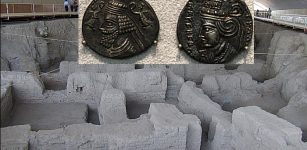 Mysterious Medes: Was It An Ancient City Of Ecbatana?
Archaeology | Jul 3, 2020
Mysterious Medes: Was It An Ancient City Of Ecbatana?
Archaeology | Jul 3, 2020 -
 DNA Of 10,000-Year-Old Skeletal Remains And Kinship Of Earliest World Settlers
Archaeology | Apr 21, 2021
DNA Of 10,000-Year-Old Skeletal Remains And Kinship Of Earliest World Settlers
Archaeology | Apr 21, 2021 -
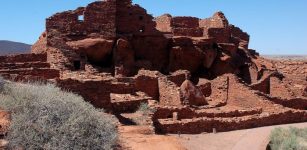 Wupatki Ruins And Sacred Sunset Crater Of Ancestral Puebloans In Arizona
Civilizations | Nov 6, 2016
Wupatki Ruins And Sacred Sunset Crater Of Ancestral Puebloans In Arizona
Civilizations | Nov 6, 2016 -
 Enigmatic Bronze Age Fulacht Fiadh: ‘Kitchens’ Of The Legendary Irish Warriors
Civilizations | Nov 26, 2018
Enigmatic Bronze Age Fulacht Fiadh: ‘Kitchens’ Of The Legendary Irish Warriors
Civilizations | Nov 26, 2018 -
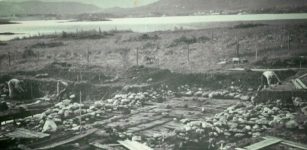 Lost Viking Village Borgund And Its 45,000 Artifacts Hidden In A Basement Examined By Experts
Archaeology | Apr 22, 2022
Lost Viking Village Borgund And Its 45,000 Artifacts Hidden In A Basement Examined By Experts
Archaeology | Apr 22, 2022 -
 Controversial Theory Suggests Ancient Egyptians Were Founders Of Chinese Civilization
Archaeology | Sep 5, 2016
Controversial Theory Suggests Ancient Egyptians Were Founders Of Chinese Civilization
Archaeology | Sep 5, 2016 -
 On This Day In History: Sverre Sigurdsson Became King Of Norway – On June 29, 1194
News | Jun 29, 2016
On This Day In History: Sverre Sigurdsson Became King Of Norway – On June 29, 1194
News | Jun 29, 2016 -
 Anglo-Saxon Kings Were Mostly Vegetarians Before Vikings Settled In England
Archaeology | Apr 21, 2022
Anglo-Saxon Kings Were Mostly Vegetarians Before Vikings Settled In England
Archaeology | Apr 21, 2022 -
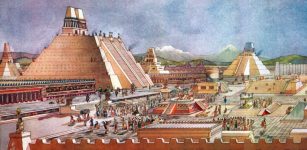 500-Hundred-Year-Old Mystery Of Aztecs’ Death May Have Been Solved – New Study
Archaeology | Jan 17, 2018
500-Hundred-Year-Old Mystery Of Aztecs’ Death May Have Been Solved – New Study
Archaeology | Jan 17, 2018 -
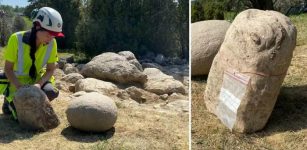 Unusual Discovery Of A Viking Age Phallic Stone In Tystberga, Sweden
Archaeology | Jun 12, 2023
Unusual Discovery Of A Viking Age Phallic Stone In Tystberga, Sweden
Archaeology | Jun 12, 2023 -
 On This Day In History: Unbelievable Flight Took Place – On Apr 28, 1939
News | Apr 28, 2016
On This Day In History: Unbelievable Flight Took Place – On Apr 28, 1939
News | Apr 28, 2016 -
 Norse God Hermod’s Meeting With The Finnish Magician Rostioff Who Revealed The Prophecy Of Vali
Featured Stories | Feb 13, 2023
Norse God Hermod’s Meeting With The Finnish Magician Rostioff Who Revealed The Prophecy Of Vali
Featured Stories | Feb 13, 2023 -
 Egtved Girl’s Unique 3,400-Year-Old Style Of Dress
Featured Stories | Nov 17, 2023
Egtved Girl’s Unique 3,400-Year-Old Style Of Dress
Featured Stories | Nov 17, 2023 -
 Cuneiform Tablet Unearthed In Hittite City Samuha Refers To Love And War Goddess Sausga
Archaeology | Oct 2, 2023
Cuneiform Tablet Unearthed In Hittite City Samuha Refers To Love And War Goddess Sausga
Archaeology | Oct 2, 2023 -
 The Hidden History of China’s Secret Societies
Featured Stories | Nov 23, 2014
The Hidden History of China’s Secret Societies
Featured Stories | Nov 23, 2014 -
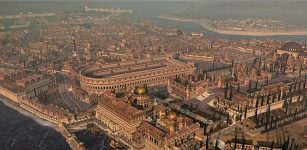 Why Was Constantinople Called New Rome?
Ancient History Facts | Mar 9, 2020
Why Was Constantinople Called New Rome?
Ancient History Facts | Mar 9, 2020 -
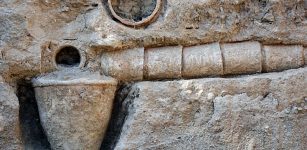 Ancient Aqueduct System Discovered In Boroujerd, Lorestan
News | Sep 16, 2015
Ancient Aqueduct System Discovered In Boroujerd, Lorestan
News | Sep 16, 2015 -
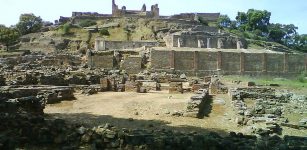 Immense Ancient Copper Mine Used By Romans Unearthed In Spain
Archaeology | Mar 20, 2017
Immense Ancient Copper Mine Used By Romans Unearthed In Spain
Archaeology | Mar 20, 2017


